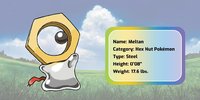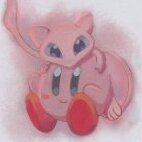

A day before Chikorita Community Day, it's 3D models and sprite images was dumped from Pokémon GO network traffic.
The dumped 2D sprites and GIFs of the animation as below:
Right after Chikorita Community Day, Ditto started masquerading as Meltan appeared in the wild in Pokémon GO.
Here are some screenshots of the outbreak on the day itself.
[Technical info: The developers temporary replaced the unreleased Kecleon with Meltan's models, animations and cries]
Here are some official screenshots:
Various pages and sources:
English page:
Meltan Reveal Page
Prof Willow and Oak's Discussion Video (Episode 1)
Pokemon.com with Tweets relating to Meltan
Japanese page:
Meltan News Page
Meltan Pokedex Page
Mythical Page
Meltan in Pokemon GO Video
Prof Willow and Oak's Discussion Video (Episode 1)
Chinese Page:
Meltan Reveal Page
Prof Willow and Oak's Discussion Video (Episode 1)
- Read more...
- 11 comments
- 12133 views
















